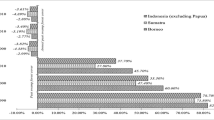Abstract.
Desertification of shrub and grassland into pinyon-juniper woodland is occurring over much of the Colorado Plateau in the southwestern United States. As trees invade, they out-compete shrubs and grasses, increasing erosion rates and reducing infiltration of moisture into the soil. This has caused habitat problems for wildlife, and reduced forage for livestock. These impacts also affect the human communities that rely on ranching and tourism related to hunting. Past land use and management practices including heavy livestock grazing, fire suppression and introduction of exotic annual plants are believed to have led to current conditions. The Montrose office of the Bureau of Land Management has implemented an ecosystem-based program to reverse the desertification process on public land. The program is centered on detailed landscape objectives describing the desired vegetation mosaic on 360 000 ha of public land. The objectives outline proportions of plant seral stages and arrays of patch sizes for each planning unit. These objectives are based on priority management issues and the need to replicate a natural vegetation mosaic. Where the existing mosaic does not meet objectives, mechanical vegetation treatments and prescribed fire are used to create early and mid-seral patches on the ground. This restored vegetation pattern and type should be sustained over time through a natural fire regime and improved livestock management. Because many uncertainties exist, an adaptive management process is being used that allows mosaic objectives to be changed or processes modified where monitoring or scientific research indicate a need.
Similar content being viewed by others
References
Branson, F.A., Gifford, G.F., Renard, K.G. and Hadley, R.F.: 1981, Rangeland Hydrology, Kendall/Hunt Publishing Company, U.S.A.
Clary, W.P.: 1971, ‘Effects of Utah juniper removal on herbage yields from Springerville soils’, J. Range Manag. 24, 373–378.
Erdman, J.A.: 1970, ‘Pinyon-juniper succession after natural fires on residual soils of Mesa Verde, Colorado’, Brigham Young University, Sci. Bull. 11(2). Biological Series.
Ernst, R. and Pieper, R.D.: 1996, ‘Changes in Pinon-Juniper vegetation: A brief history’, Rangelands 18(1), 14–16.
Cook, A.E., Noble, S.M. and Ferguson, J.R.: 1995, ‘The Southwest Colorado Vegetation Classification Project: A Model for Interagency Remote Sensing Project Coordination’, in: Proceedings GIS/LIS ‘95 Annual Conference, Nashville, Tennessee.
Howard, V.W., Cheap, K.M., Hier, R.H., Thompson, T.G. and Dimas, J.A.: 1987, ‘Effects of Cabling Pinyon-Juniper on Mule Deer and Lagomorph Use’, in: Proceedings Pinyon-Juniper Conference USDA Forest Service General Technical Report INT-215. Reno, NV, U.S.A.
Marshall, J.K.: 1973, in: J.V. Lovett (ed), The Environmental, Economic, and Social Significance of Drought, Angus and Robertson, Sydney, Australia.
Jameson, D.A.: 1967, ‘The relationship of tree overstory and herbaceous understory vegetation’, J. Range Manag. 20, 247–249.
Johnsen, T.N.: 1962, ‘One seed juniper invasion of northern Arizona grasslands’, Ecol. Monogr. 32, 187–207.
Padien, D.J. and Lajtha, K.: 1992, ‘Plant spatial pattern and nutrient distribution in pinyon-juniper woodlands along an elevational gradient in northern New Mexico,’ Int. J. Plant Sci. 153(3), 425–433.
Pieper, R.: 1990, ‘Overstory-understory relations in Pinyon-Juniper woodlands in New Mexico’, J. Range Manag. 43(5), 413–415.
Pierce, C.K. and Wooley, S.B.: 1936, ‘The influence of range plant cover on the rate of absorption of surface water by soils’, J. Forestry 34, 844–847.
Schlesinger, W.H., Reynolds, J.F., Cunningham, G.L., Heunneke, L.H., Jarrell, W.H., Virginia, R.A. and Whitford, W.G.: 1990, ‘Biological feedbacks in global desertification’, Science 247, 1043–1048.
Sedgwick, J.A. and Ryder, R.A.: 1987, ‘Effects of Chaining Pinyon-Juniper on Nongame Wildlife’, in: Proceedings–Pinyon-Juniper Conference USDA Forest Service General Technical Report INT-215. Reno, NV, U.S.A.
Stager, D.W. and Klebenow, D.A.: 1987, ‘Mule Deer Response to Wildfire in Great Basin Pinyon-juniper Woodland’, in: Proceedings–Pinyon-Juniper Conference USDA Forest Service General Technical Report INT-215. Reno, NV, U.S.A.
Tausch, R.J. 1998(a), ‘Historic Pinyon and Juniper Woodland Development’, in: USDA Forest Service Proceedings RMRS-P-0. Provo, UT, U.S.A.
Tausch, R.J.: 1998(b), ‘Transitions and Thresholds: Influences and Implications for Management in Pinyon and Juniper Woodlands’, in: USDA Forest Service Proceedings RMRS-P-0. Provo, UT, U.S.A.
USDI : 1998 Gunnison Sage Grouse Conservation Plan Crawford Area-Colorado, Department of Interior, BLM, U.S.A.
Welsh, S.L., Atwood, N.D., Higgens, L.C., and Goodrich, S.: 1987, ‘A Utah Flora’, Great Basin Naturalist Memoir No.9.
West, N.E. and Van Pelt, N.S.: 1986, ‘Successional patterns in Pinyon-Juniper woodlands’, Paper presented at the Pinyon-Juniper Conference, Reno, NV January 13–16, 1986.
Author information
Authors and Affiliations
Corresponding author
Rights and permissions
About this article
Cite this article
Clements, A. An Ecosystem Approach to Combat Desertification on the Colorado Plateau. Environ Monit Assess 99, 233–243 (2004). https://doi.org/10.1007/s10661-004-4024-4
Issue Date:
DOI: https://doi.org/10.1007/s10661-004-4024-4




